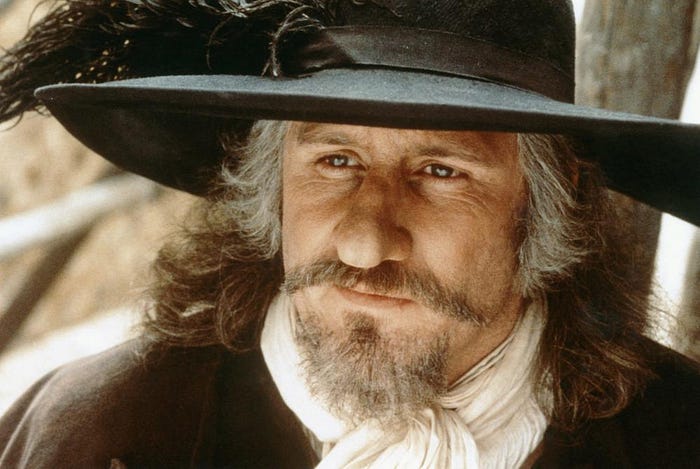
Member-only story
Cyrano de Bergerac: A Nose by Any Other Name Would Smell as Sweet
I was first captivated by the story of Cyrano de Bergerac when I had a bit part in a college production of Edmund Rostand’s famous play. For those who are unfamiliar, Cyrano de Bergerac is a swashbuckling poet with a monstrous nose — a character who makes more enemies than friends and who practices swordplay and wordplay at the same time, composing poems against pride and puncturing pomposity with a pun. A tragic character with a rubber nose — more a Touchstone than a Hamlet — Cyrano takes the stage in big boots and a broad-brimmed hat to swagger over his inferiors and swoon over his lady.
Cyrano’s nose is his red badge of courage and the symbol of his nobility, but it is also the red nose of the clown and the sign of his absurdity. This is why Cyrano is the quintessential romantic hero — not only because he is intelligent, courteous, courageous, and true, but because he is absurd. He is a swashbuckling fool, a hilarious hero; a cross between d’Artagnan and Jimmy Durante. His nobility, like his nose, is both admirable and laughable. As the romantic, foolish knight errant, Cyrano is comrade to Don Quixote who wears a saucepan for a helmet, rescues not so fair damsels in distress and jousts with gigantic windmills.
The Man Behind the Nose
Until recently I did not know that the knight with the nose was a real person. Rostand based his amusing musketeer on a genuine character from seventeenth century France. Hercule-Savinien Cyrano de Bergerac, who died in 1655, was a dramatist and duelist. A dashing soldier, he dashed off poetry and plays like Rostand’s hero.
Most biographers believe Cyrano de Bergerac was born into a Gascon family of minor nobility. Educated at home and then by a tutor in Paris, he joined the military in 1638 at the age of nineteen, and after his service he returned to Paris to embark on a career as a dramatist and controversialist. As in Rostand’s play, Cyrano sported a large nose for which he was famous. He made enemies, fought duels and battled in the siege of Arras. The model for Roxanne was his beautiful cousin, who in real life married Cyrano’s fellow soldier Baron Christian de Neuvillette. The plot line however, in which Roxanne is ignorant of Cyrano’s passion, only to be wooed by Cyrano through the…